Loek van Wely’s prediction of six decided games in the match Van Foreest-Sokolov can still come true. Today the 17-year-old Dutch champion drew even again; in a relatively strategic game this time. ‘Those guys are animals’, said Nigel Short. ‘If either one of them has the initiative, it’s over.’ Hou Yifan has an unfortunate event so far; today she tried to attack but she walked right into a razor-sharp counter by Short and is now trailing 1-3.
We will start with the Hou Yifan-Short match this time – today their game was at least as interesting as the other one.

Photo: Lennart Ootes
Hou Yifan - Short
1.e4 e6 2.d4 d5 3.e5 c5 4.c3 Bd7 5.Nf3 Qb6 6.Bd3 cxd4 7.Nxd4!?
A curious move, avoiding the standard French structures in which Short is so well at home.
7...Nc6 8.Nxc6 bxc6 9.0–0 Ne7
At this moment, on move 8 in Van Foreest-Sokolov the same central structure was on the board, and Black played ...Ne7 too.
10.Qe2 a5 11.Nd2 c5
Black is going to put pressure on e5 after all.
12.c4 Nc6 13.f4 g6 14.Kh1
At this moment Loek van Wely was wondering aloud in the commentary room where Black was going to put his king. Kingside castling looks risky, but still this is Short’s choice.
14...Be7 15.b3 0–0
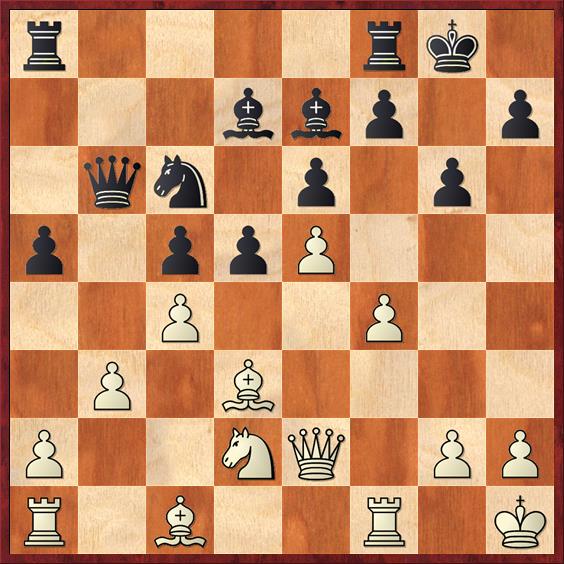
It looks as if White has something, but Short was content here: ‘The position is interesting and unbalanced.’
16.f5!
And yet, this was the best move! What else should White do? About this situation Short told a little story: ‘In 1988 I played a Candidates match with Speelman. After two draws I lost a game, and with White in the next game I felt the psychological pressure: time was running out, I had to do something. I pushed, and then he broke out.’ Hou Yifan had never been in such a situation before, but ‘I understand this very well’, she said.
16...exf5!
Commentator Cor van Wijgerden and his audience were expecting the natural move 16...Nd4 followed by 17...gxf5, when White can develop some promising attacking plans with, for instance, Nf3. But Short had a good think and came up with something completely different.
17.cxd5 Nxe5!

18.Nf3?
This is the actual mistake. 18.Nc4! was still OK: 18…Nxc4 19.Qxe7 Qd6 20.Qxd6 Nxd6 21.Be3, and now Black can play 21...Ne4, but also 21...Rfe8 (21...Nb7 is possible too, but a little passive) 22.Bxc5 Re5! 23.Rad1 Rxd5 24.Bxf5! Rxc5! 25.Bxd7 Ne4 . ‘Perhaps this isn’t even bad for me’, Hou Yifan said. ‘In any case, this was the way to play’, agreed Short.
18...Nxd3! 19.Qxe7
19.Qxd3 loses an exchange after 19...Bb5, but now Black gets a ‘giant sprawling lobster’ on d3, as Short put it. The term 'octopus' was once wrongly translated by Helmut Pfleger after the famous Karpov-Kasparov game, the Englishman told us. By the way, the Dutch newspaper de Volkskrant published a quite sensational interview with him today.
19...Bb5 20.Qh4 f6 21.Bd2 Rad8 22.Bc3 Rxd5 23.Qh6 Qc7 24.a4 Ba6 25.Qe3 Qd7 26.Bxa5 Re8 27.Qg1 Re2 28.Bc3 Rd6 29.h3 Tc2 30.Ba5

30...Bb7
The lobster on d3 has done its job, and now Black is going to crush the white constellation Nf3-g2-h3.
31.Qh2 f4 32.Qg1 Ne5 33.Ne1
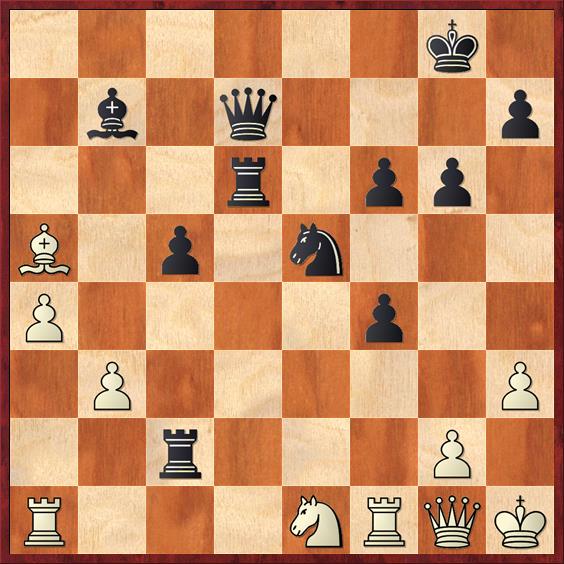
33...Rxg2
This combination, simple for a grandmaster, was played a tempo.
34.Nxg2 Qxh3+ 35.Qh2 Bxg2+ 36.Kg1 Bxf1
And White resigned. After 37.Rxf1 Nf3+ 38.Rxf3 Rd1+ it is mate.
Obviously, Short was quite content with his second full point, and Hou Yifan was very sporting: ‘He played very well’, she said.

Photo: Lennart Ootes

Photo: Lennart Ootes

Photo: Lennart Ootes
Jorden van Foreest entered the playing room with a highly resolute look on his face (as his opponent is also wont to do). After all, he was White today. ‘With Black it was very bad up to now’, he said, ‘so I have to do it today.’ And he didn’t disappoint us.

Photo: Lennart Ootes
Van Foreest - Sokolov
1.e4 c6
Surely this was a surprise? ‘Ah well, everybody plays this against me nowadays’, Van Foreest said.
2.d4 d5 3.e5 c5 4.Nf3 Nc6 5.dxc5 e6
After this the white player was ‘out of book’. The most popular moves now are 6.Be3 and 6.Bd3.
6.a3 Bxc5 7.b4 Bb6 8.Bd3 Nge7
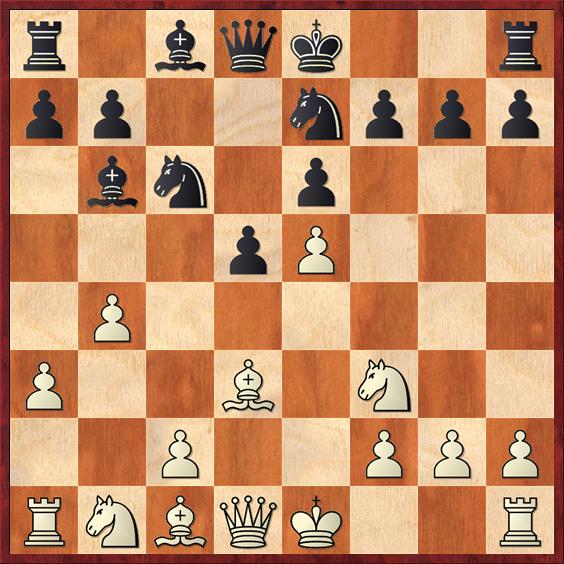
9.0–0
Van Foreest was not very satisfied with this move, and with hindsight he thought that he should have played 9.Bb2 first. His visiting colleague GM Eric Hansen told him that 9...Ng6 10.0–0 Nf4 11.Re1 Nxd3 12.Qxd3, with the plan Nbd2 and c2-c4, is commonly played here, and is good for White.
9...a5!? 10.b5 Nd4 11.Re1 Nxf3+ 12.Qxf3 Ng6 13.Bb2
13.a4 was considered in the commentary room, but as Jeroen Bosch said, Black can play 13...Nxe5 here. 14.Rxe5 Bd4 looks quite dangerous, but it is possible.
13...Qg5
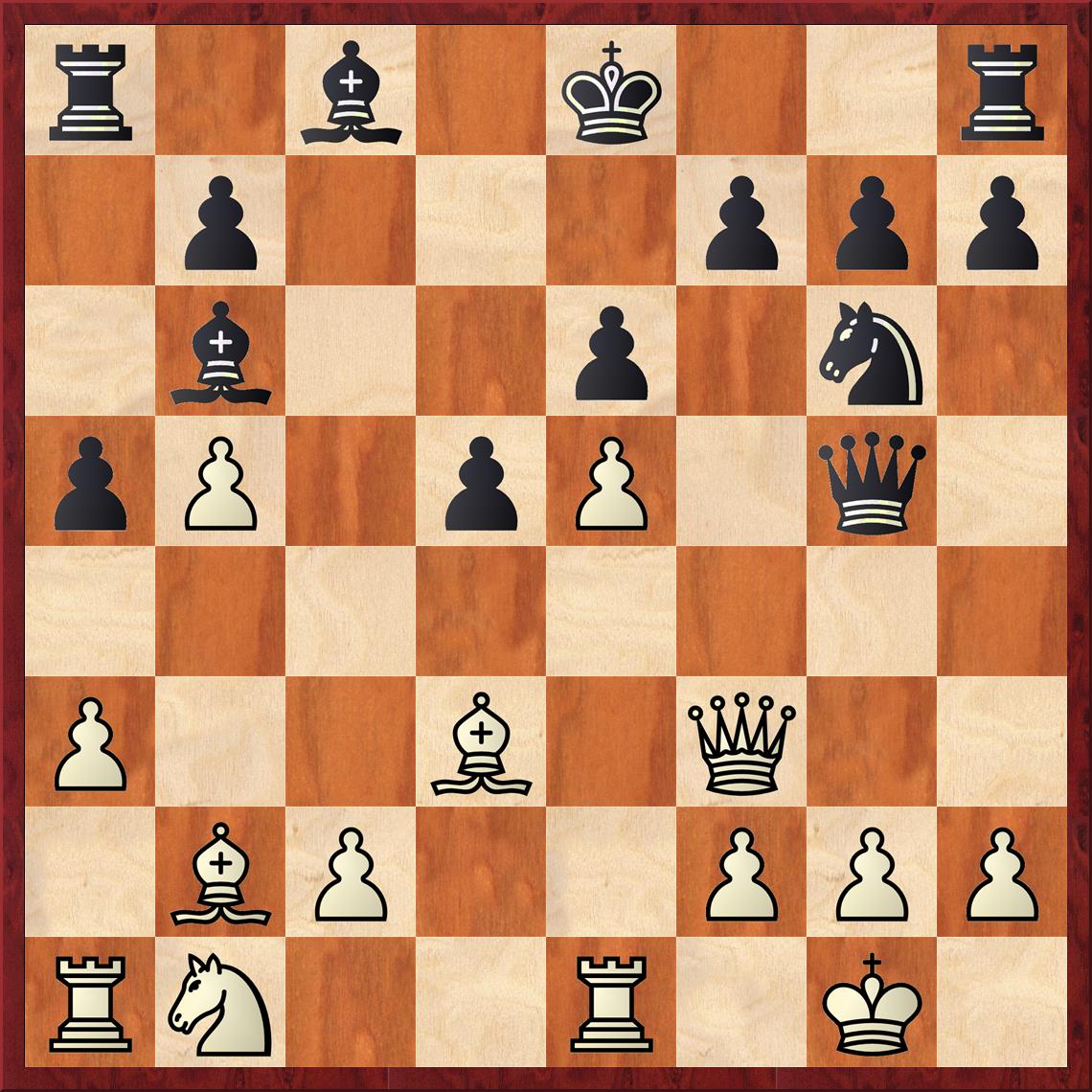
Posing White a difficult problem. Jorden had been ‘dreaming’ of g2-g3 and h2-h4, but here after 14.g3 he feared 14...h5. In a short analysis with Short, Seirawan and Hansen all kinds of wild sacrificial lines appeared on the board. Van Foreest opts for a quieter continuation, but he wasn’t happy with his position.
14.Qg3 Dxg3 15.hxg3 h5 16.Nd2
Looking at the structure, you might consider 16.Bxg6, but this would also give Black some more elbow room.
16...h4!? 17.gxh4 Rxh4 18.g3 Rg4
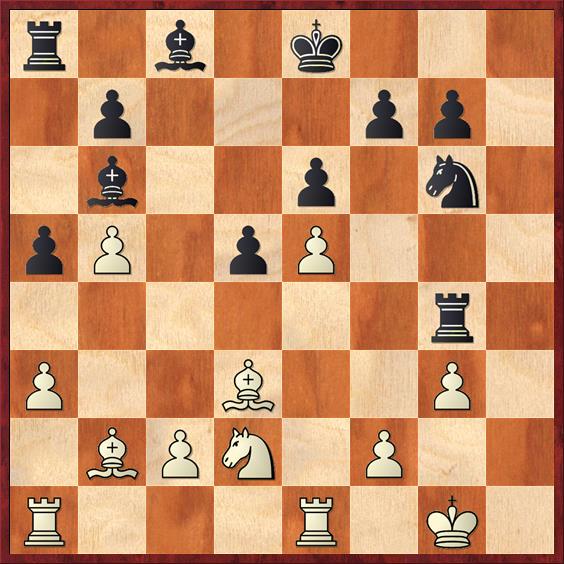
19.Kf1!
Here Van Foreest became more optimistic again. The less subtle 19.Kg2!? Nf4+ 20.Kf3 Nxd3 21.cxd3 was in fact possible. Either way, White gets chances on the c-file and, especially, the h-file.
19...Bd7 20.Ke2 a4?!
A thematic move, but now Black has to watch out that his rook on g4 won’t be trapped. Moreover, later, deep in the endgame, Black doesn’t have the a4-square at his disposal, as Seirawan remarked. 20...Rc8 was slightly better.
21.Rh1 Ke7 22.Rh5 f5?
The well-known evil: the black player is not good at doing nothing. Now White obtains an advantage by force. Better was, again, 22...Rc8.
23.exf6+ gxf6 24.Rh7+ Kd6 25.Bxg6 Rxg6
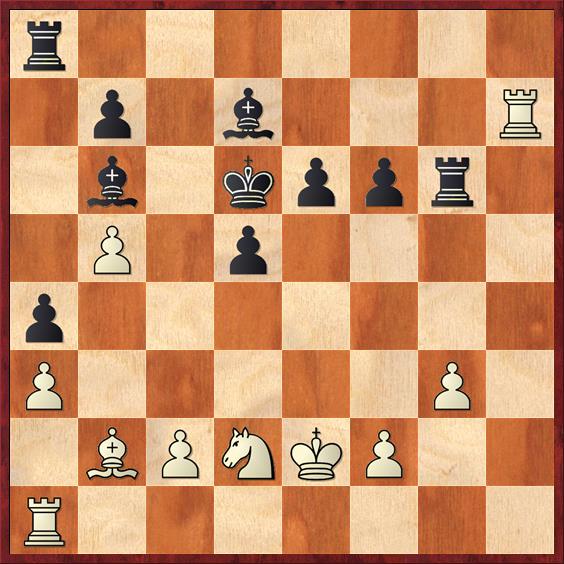
26.Nc4+!
A nice combination. After the game Van Foreest thought that 26.Ne4+ would have been even better, as then after Rxe6 the pawn on e4 is also hanging. For some dark reason the computer disagrees.
26...dxc4 27.Rd1+ Kc5 28.Rhxd7
Possibly, 28.Bd4+ Kxb5 29.Rb1+ Kc6 30.Rxb6+ Kc7 31.Rxe6 was even more accurate. True, the bishop on d7 is of the opposite colour, but it is also weak. And White is already threatening 32.Bb6+, for instance: 31...Ra6 32.Bb6+ Rxb6 33.Rxd7+ Kxd7 34.Rxb6 followed by 35.Rb4, netting a pawn.
28...Kxb5 29.R1d6 Rc8 30.Rxe6 c3 31.Bc1 Rc7?!
Perhaps a little better was 31...Rc6 32.Re4, but here also the black monarch is in trouble.
32.Rd5+ Kc4
Certainly not 32...Rc5?? 33.Rxb6+ Kxb6 34.Be3; 32...Bc5 33.Be3 b6 34.Bxc5 Kc4 (34...bxc5 35.Kd3) 35.Rf5 bxc5 36.Re4+! Kb5 37.Kd3. After the text move Black lands in an annoying pin.
33.Rf5 Bd4 34.Re4 Rg8 35.Be3 Rd7 36.Rxf6 b5 37.g4 b4 38.Bxd4
38.Rff4 Rgd8 39.Bxd4 Rxd4 40.Ke3! Rxe4+ 41.Rxe4+ Kc5 42.Rxb4 Rd2 43.g5 would have won a little more quickly.
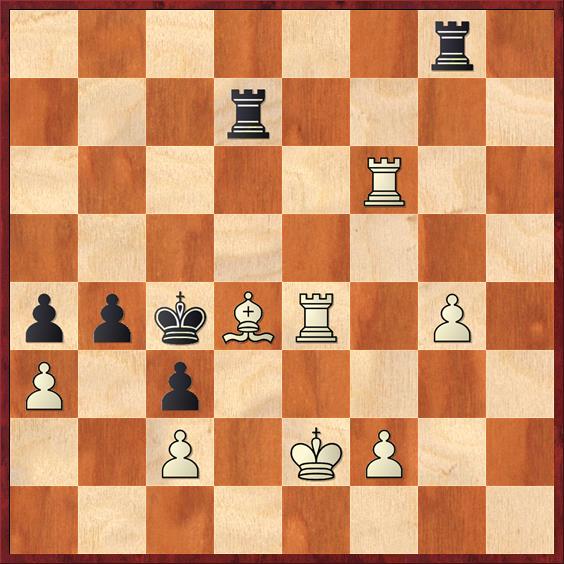
However, Sokolov resigned here – ‘a little early, I think’, Van Foreest said. There can follow: 38...Rxd4 39.Rxd4+ Kxd4 40.Rf4+ Kc5 41.Rxb4 Rd8 42.g5 or 42.Rxa4, and in spite of the fact that Black gets the c-pawn, the rook ending should win for White.

Photo: Lennart Ootes

Photo: Lennart Ootes

 .
. 






















